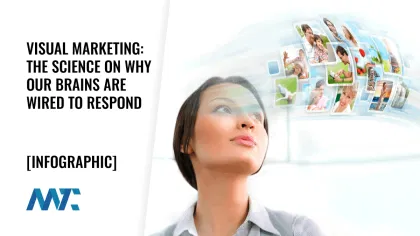
Marketers face a fundamental truth: people are hardwired to process and respond to visuals. Whether browsing a website, scrolling social media, or evaluating a product, the human brain prioritizes visual information. Understanding why this happens—and how to leverage it—can dramatically improve engagement, recall, and conversion rates across all marketing efforts.
Our Brain Is Made for Visual Processing
The human brain is predominantly a visual processor. An estimated 80% of the information people take in comes through what they see and do. This visual bias is deeply embedded in human evolution: sight was essential for survival, helping early humans detect threats and navigate their environment.
When it comes to memory, visuals outperform text by a wide margin. People typically remember only 20% of what they read, but pairing relevant images with text can boost recall and comprehension by as much as 650%. This means marketing content that integrates images is not just more engaging but also more memorable.
Real Photos Capture Attention
Not all visuals are equally effective. Real photos consistently outperform stock images or generic graphics. Authentic images resonate with viewers because they feel more relatable and trustworthy. A real person’s photo can generate up to 35% better results than a stock photo, while customer testimonials that feature full names and photos drive over 100% higher engagement.
Adding high-quality, real-world images to marketing materials can significantly boost interaction rates and emotional connection. People want to see themselves reflected in a brand’s imagery, which is why photos of employees, customers, and real-life scenarios often outperform polished but impersonal visuals.
Colors Capture Attention
Color is another powerful visual element that shapes how people process and respond to marketing. Research shows that people recall color advertisements 82% more often than non-colored ones. The use of color can increase brand recognition by 80%, comprehension by 73%, and readership by up to 80%.
Color contrast between text and background also plays a key role in guiding attention and increasing legibility. Smart use of color not only makes marketing materials more attractive but can also steer the viewer’s eye to key messages and calls to action.
Our Brain Loves to Be Stimulated
The human brain craves stimulation, and visual content delivers it more efficiently than text alone. In fact, 59% of senior executives say they would rather watch a video than read text, when both are available. Furthermore, adding a picture to information increases recall by up to 65%.
This need for stimulation also explains why people tend to skim content online—81% of users do not read everything but scan for visuals and headlines. As more content shifts to digital, incorporating stimulating visuals is essential for grabbing and holding attention. People follow directions with text and illustrations 323% better than with text alone, underscoring the importance of combining visuals with clear messaging.
We Can Understand Visual Information in an Instant
Humans process visuals far faster than text. Visuals are processed up to 60,000 times faster, and studies suggest we are ten times faster at interpreting image-based information compared to words. In fact, the brain can identify the meaning of an image in as little as 13 milliseconds—faster than the blink of an eye.
Because of this, images can create instant understanding and emotional resonance. The brain can remember up to 2,000 images with very little learning and still recognize them days later. For marketers, this translates into an extraordinary opportunity: a single, well-chosen image can communicate complex ideas and forge lasting brand associations more powerfully than paragraphs of text.
The Power of Visual Marketing
Visual marketing is not simply about aesthetics—it’s about harnessing how the human brain is built to operate. By using real photos, leveraging the power of color, stimulating the senses, and capitalizing on the brain’s visual processing speed, marketers can create more effective, memorable, and persuasive campaigns.
In an environment where attention is scarce and competition is fierce, mastering the art of visual marketing can be the difference between being seen—and being ignored.